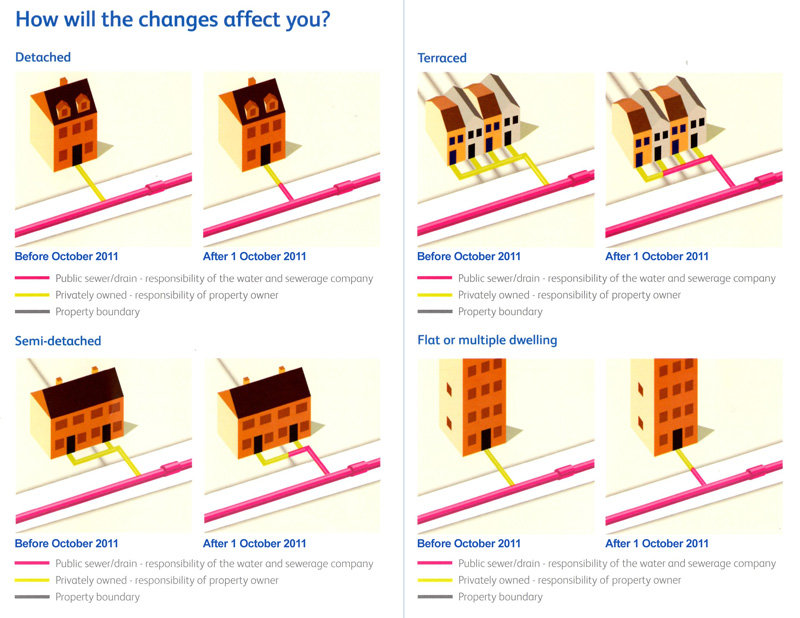Conservatories Near Sewers
Conservatories near sewers require special attention:
Building Over Sewers (on private non-shared drains only)
If there is an inspection cover on the site of your conservatory, you must also bear in mind how the foundations for the conservatory will accommodate sewer pipes. You need to ensure that the weight of the foundation is not imposed on the pipe whether this is beneath the foundation or running through it.
Building Over Inspection Covers (on private non-shared drains only)
If your home was built after 1939 it probably has a private sewer system, i.e. one not owned by your local Water Authority. If you are unsure whether your sewer system is private or public you should ask your Water Authority.
If your new conservatory is planned to be constructed within three meters of a public sewer it is a legal requirement that you contact your local water authority to consult with them and get their approval before commencing.
If the conservatory is being built over an inspection cover then a sealed, screw down cover is required to prevent odours and gases escaping into the conservatory. Depending upon drain routing, if there are no other inspection covers close by it is sensible to move the inspection cover outside the conservatory so that you have good access to potential blocked drains. Doing this will also give you more freedom over the type of conservatory flooring you can use, as it will not be necessary to install it with access to the inspection cover in mind.
Building Over Shared/Public Sewers
On October 1st 2010, the Water Boards took over the ownership of all Shared Sewers and if your proposed extension/conservatory is to be built over, or within 3 metres of a shared sewer you need to get in touch with your Water Board to discuss the best way of dealing with an affected sewer. During these discussions they are likely to recommend one of the following options:
1) Avoid the sewer
Modifications to your plans may mean that the work does not affect the sewer. This is often the easiest and cheapest option. We recommend you discuss this with your builder, keeping in mind that your proposed building should be at least three metres away from the sewer.
2) Divert the sewer
If your plans cannot be modified, you will usually be asked to divert the sewer (if practical). In most cases where the sewer is up to 160mm diameter they may allow your builder to undertake this diversionary work. The builder will have to satisfy your Water Board that they are competent and they must be in possession of a written consent before carrying out any work. Alternatively, your Water Board may be able to provide a quotation for the work, the cost of which will need to be met by yourself.
3) Building over or within three metres of a public sewer
Where the sewer is in a satisfactory condition, your Water Board may allow you to build over or within three metres of it. You must have your Water Board written agreement to do this and it may be necessary for your Water Board to carry out the following checks:
- A closed circuit television (CCTV) survey before you begin work, to check whether the sewer can be built over or if repair work is needed first. In most cases you will not be charged for the repair work.
- A follow-up CCTV survey when you have completed the work, to check that construction work has not damaged the sewer.
- If the sewer is less than 160mm diameter and only serves a limited number of properties, we may decide not to carry out a CCTV survey. Instead, they will use historical records of blockages, repairs and other local knowledge to ascertain the sewer’s condition. Please note, your Water Board will not allow the building over of manholes, rising mains or strategic sewers.
- Your Water Board will make a charge for every application to build over or near a sewer. The level of charge will depend on the size of the sewer and whether a detailed survey of the sewer is necessary. In some cases, where major ‘strategic’ sewers are involved, a formal agreement may also be required.
DO NOT AVOID THIS PROCEDURE, AS YOU COULD BE REQUIRED TO REMOVE THE EXTENSION/CONSERVATORY, IF YOU DO NOT OBTAIN THE REQUIRED CONSENTS
Water supply and sanitation in England and Wales
provision in the UK as higher than most other major countries in the EU. More than 700,000 kilometres of mains and sewers are buried.… read more…



